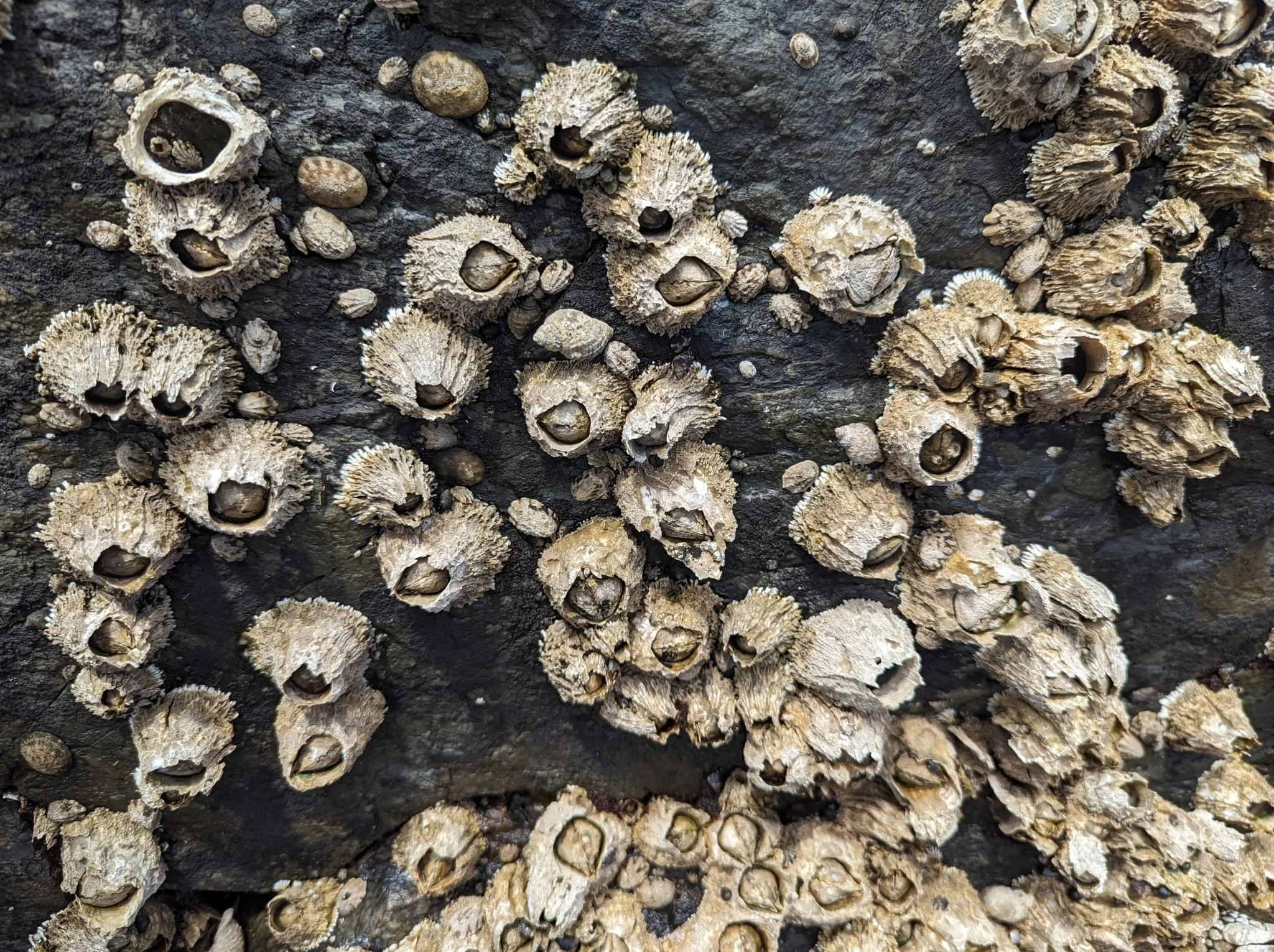Barnacles
Barnacles, like mussels, form colonies in intertidal and subtidal areas along the coast or on boats and floating debris. They’re found in great numbers along rocky parts of our coastline, often in communities with mussels.
Although superficially similar to mollusks, barnacles are actually a type of crustacean. They attach to rocks or other surfaces with their heads and grow a protective shell around themselves, feeding by using modified hind legs to pull in floating detritus.
Barnacles taste similar to other crustaceans such as crab and shrimp. In the Pacific Northwest, there are three species that are worth exploring as food items: goose barnacles, thatched barnacles, and giant acorn barnacles.
Species
Barnacles
Goose barnacle (Pollicipes polymerus)
Thatched barnacle (Semibalanus cariosus)
Giant acorn barnacle (Balanus nubilus)
Goose barnacles
The goose barnacle, also known as a gooseneck or stalked barnacle, is a type of barnacle with a long “neck” that looks vaguely like a goose’s neck. In the Pacific Northwest, we have the native species Pollicipes polymerus.
Goose barnacles are found in various parts of the world, but they are best known as a food in northern Spain and Portugal. There, the local species, Pollicipes pollicipes, is commonly called “percebes”. Another species, the Japanese goose barnacle (Capitulum mitella), is consumed in eastern Asia.
Goose barnacles command a high price as they must be manually collected by fishermen from exposed rocky coasts. Harvesting goose barnacles is dangerous work. Overharvesting is an ongoing concern, so stocks must be carefully managed.
In the Pacific Northwest, goose barnacles are commercially collected in small quantities around Vancouver, British Columbia. In Oregon, they were available from Nevor Shellfish Farms in Netarts Bay, but unfortunately the company has shut down.
Cooking with goose barnacles
Gently steamed or simmered, goose barnacles are more commonly consumed than true barnacles. They must be peeled: the shell and the leathery skin on the “neck” are removed and discarded before eating.
Other barnacle species
Indigenous people on the Pacific Coast harvested and consumed both thatched barnacles and giant acorn barnacles.
Currently, both species are very rarely eaten in the Pacific Northwest. However, a related species from the Pacific coast of South America, the giant barnacle (Austromegabalanus psittacus), is commonly fished and consumed in Chile, where it may have been overharvested.
The thatched barnacle (Semibalanus cariosus) grows up to three inches in diameter. This species is found in the intertidal zone. Thatched barnacles are more easily accessible than giant acorn barnacles.
The giant acorn barnacle (Balanus nubilus) is the largest barnacle species in the world, growing up to four, sometimes even six inches in diameter.
Giant acorn barnacles are more difficult to reach, as they mainly grow on subtidal rocks. We more often see the related acorn barnacles (Balanus glandula) which grow in the upper intertidal zone. They are also edible, but are very small and rarely, if ever, collected for eating.
Pelagic goose barnacles
Pelagic goose barnacles (Lepas anatifera) are a species that is only found attached to floating objects in the open ocean. They sometimes wash up on the Pacific Northwest coastline attached to debris. They are edible, but rarely eaten. They’re considered less desirable because their stems are thinner.



